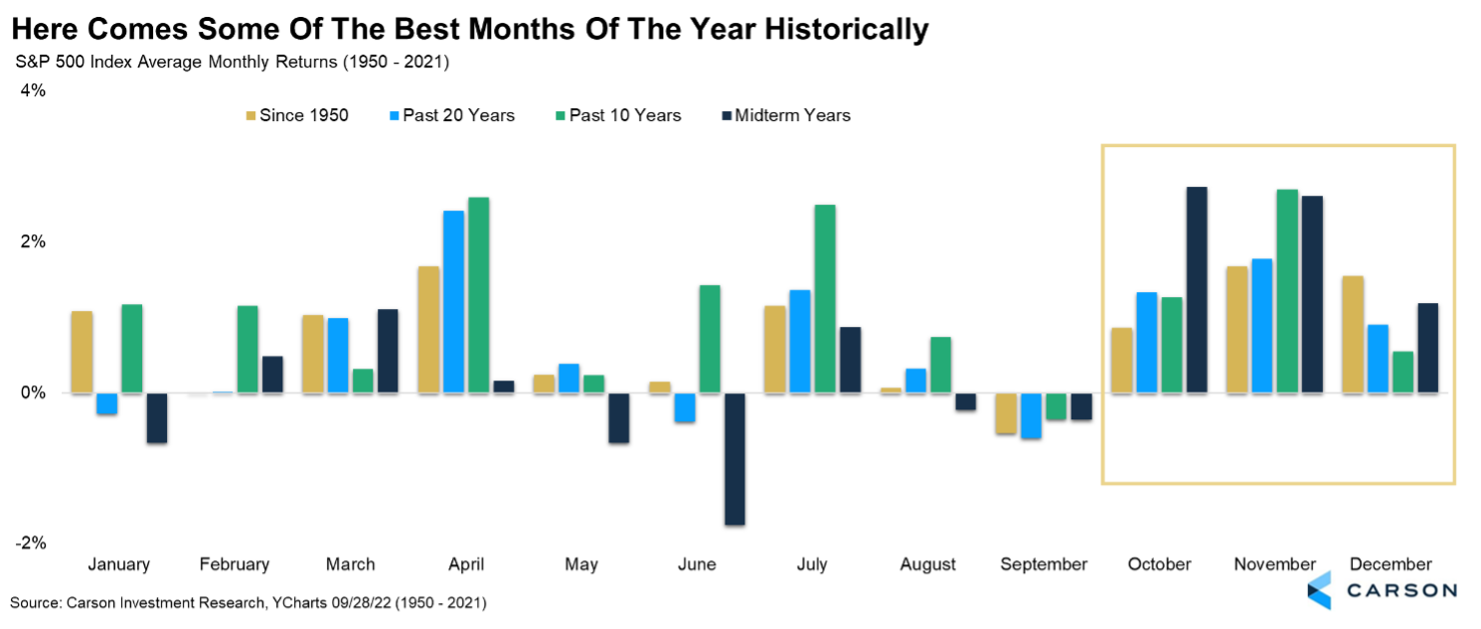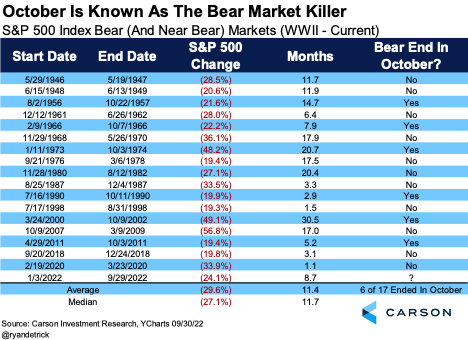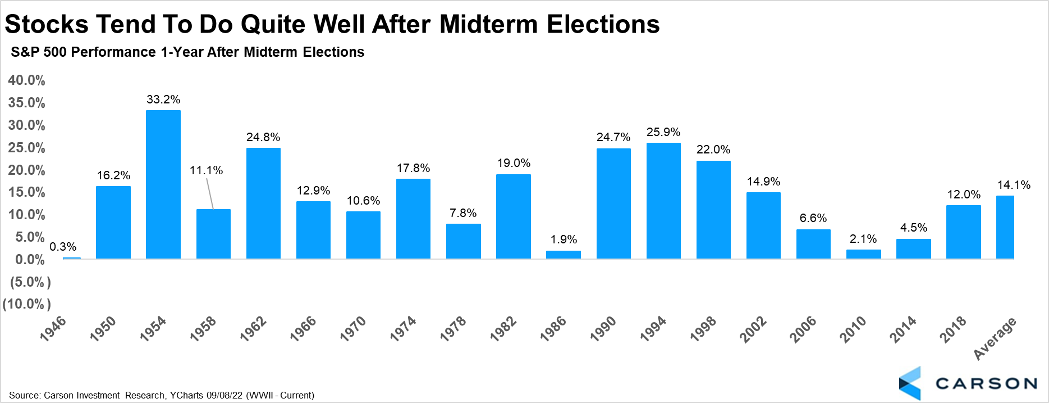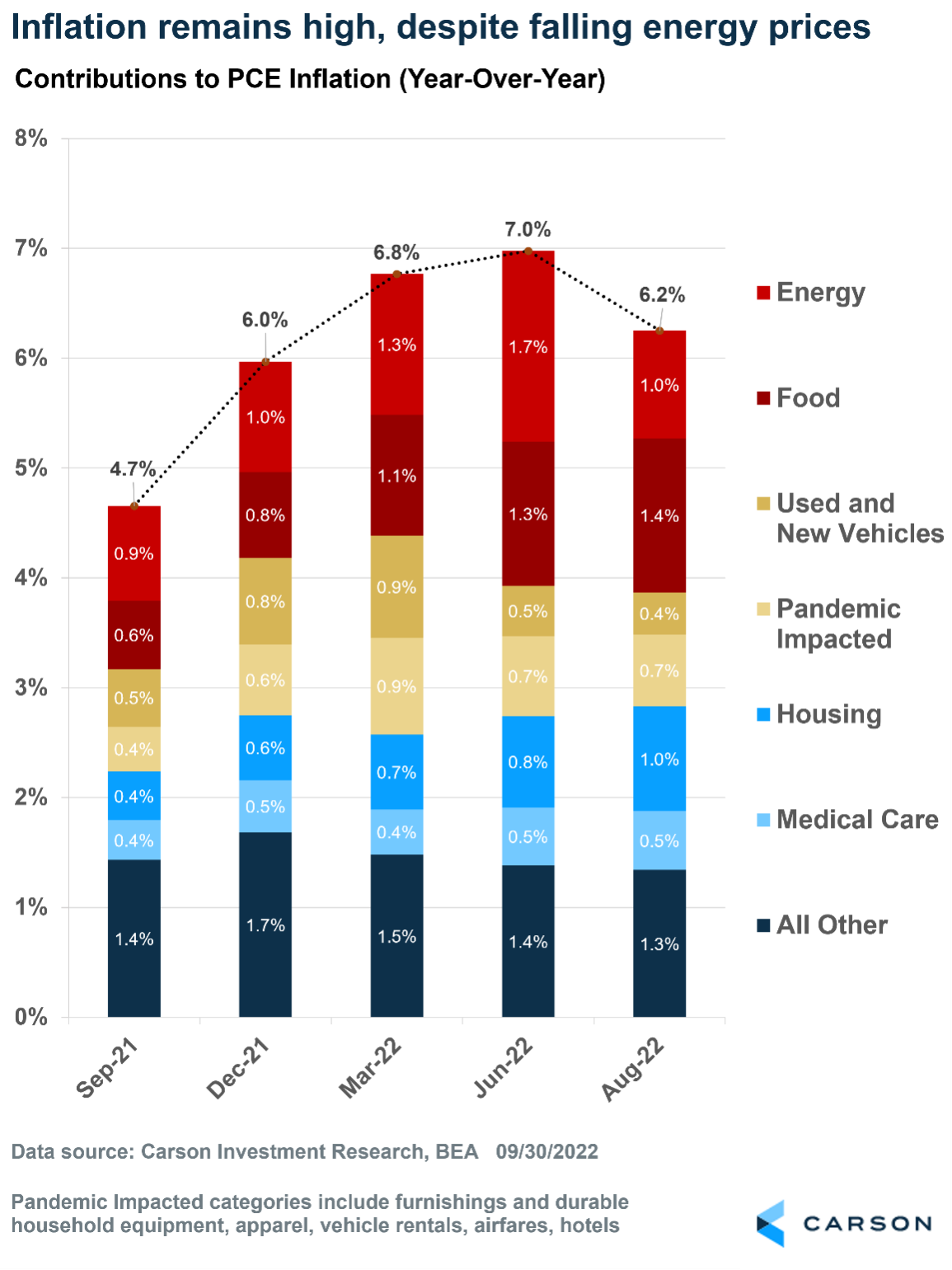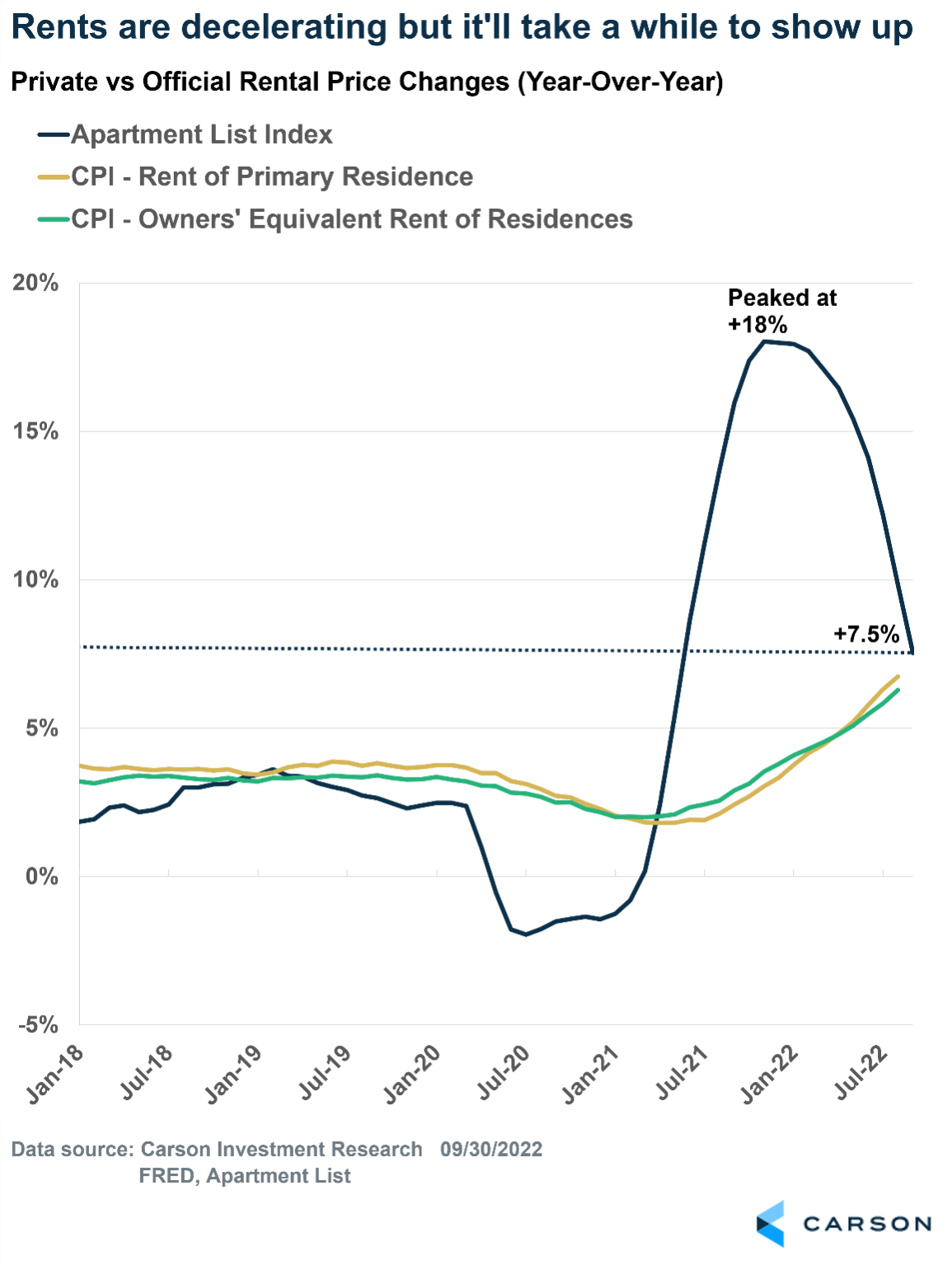October Is Misunderstood
Good riddance to September, as both stocks and bonds had another rough month. When it was all said and done, the S&P 500 fell 9.3% for the worst September since 2008 and one of the worst ever. For the quarter, the S&P 500 lost 5.3%. That was the third consecutive quarterly decline, the longest streak since the six that occurred during the 2007-2008 financial crisis.
- October is known for both crashes and major market bottoms.
- The fourth quarter is typically the best quarter of the year, and that could play out once again.
- Midterm elections are nearly here, and stocks typically do well after elections.
- Inflation remains elevated, especially core inflation, and that means no relief from the Fed yet.
- A large component of core inflation is rents, and private measures show rents are decelerating sharply.
Is all hope lost? We don’t think so. In fact, we think there is still a good chance for stocks to rally by year-end. Now, let’s get this out of the way. October has seen some spectacular crashes. 1929, 1987, and 2008 all saw some of the largest monthly declines ever, and they all took place in October. But we like to say October gets a bad rap, as historically it hasn’t been that bad. In fact, during midterm election years October has been the best month of the year, followed by November and then December. Historically, midterm years are weak to start with big gains later on. We think that’s possible this year.
The Bear Market Killer
Every year is different, and the headwinds to this bear market are alive and well. But they are also well documented. One potential positive is overall market sentiment is approaching historic levels of bearishness. Remember what General Patton said, “If everybody is thinking alike, then somebody isn’t thinking.” The truth is everyone is expecting things to get worse, and that means a lot of bad news is priced into the market, suggesting potential capitulation is near.
The American Association of Individual Investors (AAII) Sentiment Poll recently showed two consecutive weeks of bears more than 60%. Incredibly, this has never happened before. Not during the crash of 1987, tech bubble burst, financial crisis, or pandemic. From a contrarian point of view, expectations are quite low, which could spark a rally on any good news (or maybe even less bad news). Of course, this doesn’t mean stocks will bottom immediately, but we are getting close.
The timing is also potential good news. While October has a reputation for crashes, it is really a bear market killer. Of the past 17 bear (or near bear markets), stocks bottomed in October six times. Could it happen again? With sentiment this pessimistic and extremely positive seasonals right around the corner, we’d be open to it.
Post-Election Positivity
It’s important for investors to remember we are about to enter one of the strongest periods for investors: the year after the midterm election.
Markets hate uncertainty, and there is a lot of that heading into an election. But once the election is over, stocks have historically done extremely well. In fact, since World War II, they’ve never been lower a year later and have risen an average of 14.1%. It might not feel like it now, but there could be good opportunities for investors over the coming year, and history would say be open to potential strength.
Inflation Continues to Run Hot, But a Big Break May Be Coming
We keep looking for inflation to break lower, but Lucy continues to take the football away. The Federal Reserve’s preferred measure of inflation, the price index based on personal consumption expenditures (PCE), came in above expectations for August. Headline inflation rose 0.3% in August and is now up 6.2% from a year ago. That’s lower than June’s 7% pace, but it’s not falling fast enough, despite the sharp drop in energy prices.
The big reason is core inflation, which excludes volatile food and energy prices, is running hot. Core prices rose 0.6% in August, the second highest monthly jump since inflation began its run last year. Core inflation is up 4.9% from last year, barely below the peak of 5.4% we saw in March. This is even more concerning with respect to monetary policy. The Fed uses core inflation to gauge where underlying inflation may be headed, and these numbers are not good. If this continues, the Fed is likely to keep raising interest rates to slow down the economy.
A big part of core inflation is housing, which is categorized as “rents” because official inflation numbers assume homeowners rent their homes to themselves as a service, and these rents are obtained from equivalent homes (called “Owner’s Equivalent Rents”). The good news is private measures of rents are showing a rapid deceleration in prices. The latest Apartment List national rent report showed rent growth is considerably slower than last year. Its rental index is up 7.5% year-over-year as of September, which is well below the peak 18% from last November.
The only hitch here is it may take a while for the deceleration to show up in official inflation statistics. This is because of the way the government measures rents — unlike the private measures, which include only new leases, the official data considers both new and existing leases. It makes sense because most leases are not up for renegotiation every month, but it does mean a sharp rise in market rents does not show up in the data immediately. On top of that, the government also averages the data over several months. What this means is the official rental inflation data may lag private measures by 8-12 months. The consumer price index for rents is still climbing, and conditions may get worse before they get better, with the numbers potentially going up for the next month or two. But the break will come.
The big question is whether the Fed will continue to focus on core inflation, an obviously lagging measure, to justify further interest rate increases. One potential positive is several supply-chain-related price indicators are pointing to a slowdown/reversal in goods prices, as we pointed out in previous commentary. This could offset higher rents over the next few months, providing some respite to a Fed looking to get on top of inflation. We just don’t need a repeat of the August inflation data, not to mention a repeat of what markets did in September.
This newsletter was written and produced by CWM, LLC. Content in this material is for general information only and not intended to provide specific advice or recommendations for any individual. All performance referenced is historical and is no guarantee of future results. All indices are unmanaged and may not be invested into directly. The views stated in this letter are not necessarily the opinion of any other named entity and should not be construed directly or indirectly as an offer to buy or sell any securities mentioned herein. Due to volatility within the markets mentioned, opinions are subject to change without notice. Information is based on sources believed to be reliable; however, their accuracy or completeness cannot be guaranteed. Past performance does not guarantee future results.
S&P 500 – A capitalization-weighted index of 500 stocks designed to measure performance of the broad domestic economy through changes in the aggregate market value of 500 stocks representing all major industries.
The NASDAQ 100 Index is a stock index of the 100 largest companies by market capitalization traded on NASDAQ Stock Market. The NASDAQ 100 Index includes publicly-traded companies from most sectors in the global economy, the major exception being financial services.
Compliance Case # 01504375


